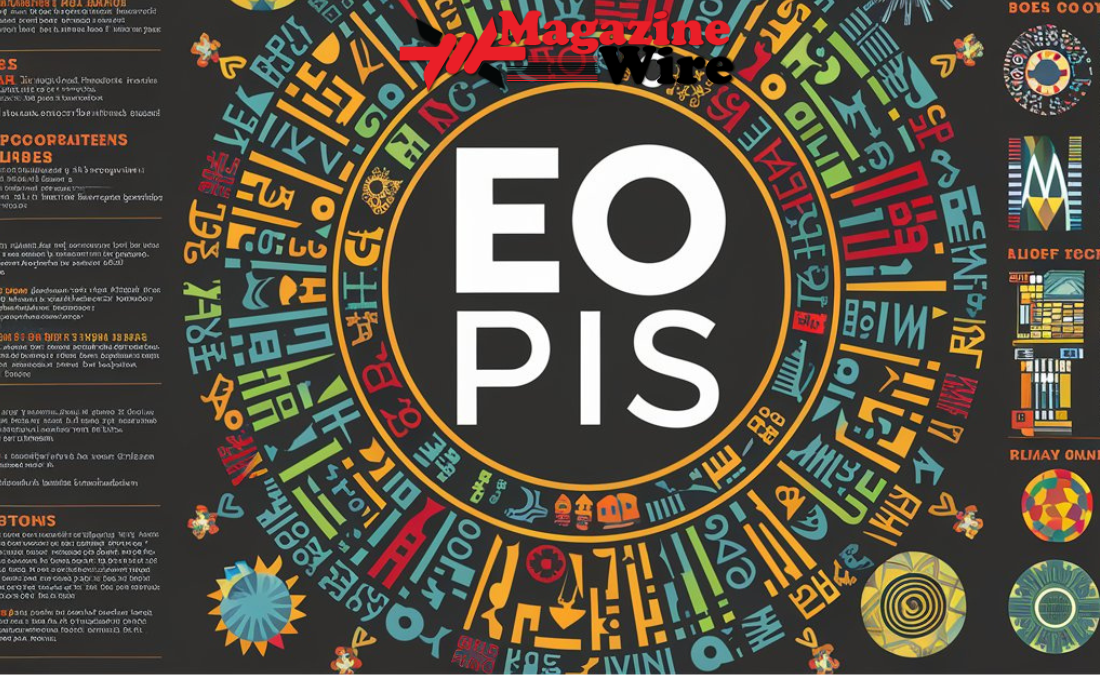In today’s fast-paced digital and business environment, many new terms, systems, and acronyms emerge that play a vital role in shaping industries and technologies. One such term that has been gaining attention is EO PIS. While at first glance the keyword might seem unfamiliar or complex, a deeper understanding reveals that EO PIS has multiple implications depending on the context. Whether it relates to enterprise operations, process integration systems, or evolving digital platforms, learning about EO PIS helps individuals and organizations align better with modern innovation.
This article provides a detailed 1,000+ word exploration of EO PIS, breaking down its meaning, significance, applications, advantages, and future potential.
What is EO PIS?
The term EO PIS can be broken into two main components:
- EO (Enterprise Operations / End-to-End Optimization) – In many contexts, EO refers to enterprise operations or optimization systems that manage critical workflows.
- PIS (Process Integration System / Passenger Information System) – PIS often signifies digital systems designed for integration, information management, or communication.
When combined, EO PIS typically refers to a comprehensive system or framework that enables efficient process integration, information sharing, and operational optimization. It is often used in industries like transportation, corporate enterprises, and IT systems where seamless integration is essential.
The Role of EO PIS in Business Operations
One of the most important applications of EO PIS is within the sphere of business and organizational operations. Companies today face increasingly complex workflows, scattered data, and rising customer expectations.
An EO PIS framework helps to:
- Streamline communication across departments.
- Automate data handling and reporting.
- Ensure compliance with regulations.
- Provide real-time analytics for decision-making.
- Reduce operational costs and redundancies.
By integrating EO PIS into the business model, organizations can enhance productivity while maintaining flexibility in responding to market shifts.
EO PIS in Transportation and Passenger Systems
Another prominent application of EO PIS is in the transportation industry, particularly in Passenger Information Systems (PIS). Many modern train stations, airports, and bus networks rely on EO PIS platforms to deliver accurate, real-time information to travelers.
Key functions include:
- Announcements and Displays: EO PIS provides live updates about arrivals, departures, and delays.
- Navigation Assistance: Helps passengers navigate through large terminals or transport hubs.
- Data Synchronization: Integrates with ticketing systems and schedules for accuracy.
- Customer Satisfaction: Enhances passenger trust and experience by ensuring transparency.
In this context, EO PIS contributes to smart transportation networks that align with digitalization and smart city initiatives.
How EO PIS Supports Digital Transformation
With digital transformation being the backbone of modern businesses, EO PIS plays a critical role in ensuring seamless transitions from traditional systems to automated platforms.
EO PIS supports digital transformation by:
- Enabling Cloud Integration: Businesses can manage data across different locations.
- Facilitating Automation: Reduces manual intervention in repetitive tasks.
- Enhancing Security: Provides secure channels for sensitive information.
- Optimizing Data Flow: Ensures that all departments work with synchronized data.
In this way, EO PIS bridges the gap between legacy systems and new-age digital infrastructure.

Advantages of Implementing EO PIS
The benefits of EO PIS span across industries, offering both tangible and intangible value.
- Efficiency – Faster workflows and better coordination reduce delays.
- Cost-Effectiveness – Automation lowers operational expenses.
- Data Accuracy – Real-time synchronization minimizes human errors.
- Scalability – EO PIS can grow with organizational needs.
- User Experience – Enhances both employee and customer satisfaction.
These advantages highlight why EO PIS is becoming a strategic necessity for organizations worldwide.
Challenges of EO PIS Implementation
While EO PIS offers numerous benefits, implementing it is not without challenges.
- High Initial Costs: Developing or purchasing EO PIS software can be expensive.
- Training Requirements: Employees need to adapt to new systems.
- Integration Complexity: Connecting EO PIS with existing legacy systems can be difficult.
- Data Security Risks: Handling sensitive information requires strict protection.
- Customization Needs: Each industry requires tailored solutions.
Organizations must carefully evaluate these challenges before investing in EO PIS.
EO PIS in Different Industries
EO PIS is highly versatile and can be adapted across sectors. Some notable applications include:
- Healthcare – For patient record management and integration of hospital systems.
- Education – Managing digital classrooms, student data, and administrative functions.
- Finance – Streamlining transactions, compliance, and fraud detection.
- Retail – Integrating online and offline sales channels.
- Government – Public service delivery and smart city infrastructure.
This adaptability makes EO PIS an essential tool in both private and public sector development.
Future of EO PIS
The future of EO PIS is bright, with advancements in AI, machine learning, and IoT (Internet of Things) further enhancing its capabilities.
Predicted future trends include:
- AI-Driven EO PIS – Smarter systems capable of predictive analytics.
- Cloud-Native EO PIS – Fully scalable and accessible globally.
- IoT Integration – Connecting real-world devices with EO PIS for real-time updates.
- Blockchain Security – Enhancing transparency and safety in sensitive data management.
- Global Expansion – Adoption across emerging markets and industries.
As industries continue to digitalize, EO PIS will play a foundational role in shaping operational excellence and customer experience.
Conclusion: Why EO PIS Matters
In conclusion, EO PIS represents more than just a technical term; it is a strategic framework for process integration, operational efficiency, and digital transformation. Whether in business operations, transportation, healthcare, or finance, EO PIS enhances performance, improves communication, and sets the foundation for innovation.




